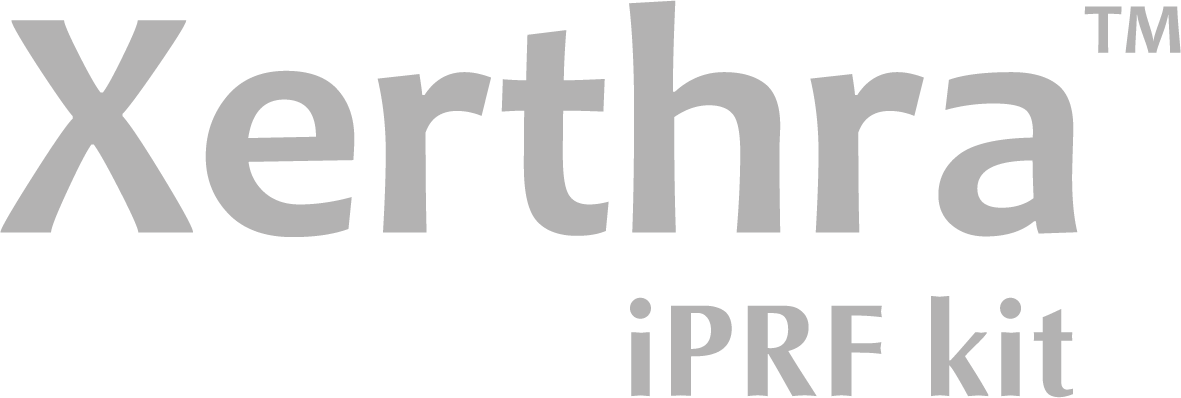One of the crucial effects of PLT-derived growth factors in general can be describes as anti-inflammatory when applied into the OA affected joint or into the tendon affected by tendinopathy. This anti-inflammatory effect lays mainly in the ability of PRP to inhibit the production of strong proinflammatory cytokines, such as IL-6 and IL-84.
Foremost, PRP with high concentration of PLTs and thus loads of different growth factors was described as potent modulator of cell metabolism in OA affected joint or in tendinopathy. Growth factors secreted by the PLTs can positively affect the production and secretion of tissue extracellular matrix (ECM) components like ACAN, COL1A1, COL2A1, COL3A1 and HA. As this leads to induced biosynthesis of ECM components like aggrecan, type II collagen and hyaluronic acid (associated with joint cartilage tissue5); and type I and III collagen (associated with tendon tissue6), platelet-rich associated products will contribute significantly to increase of regeneration processes of both articular cartilage and tendon.
Furthermore, the effect of high abundance of platelets therapy includes also the induction of specific tissue cell proliferation, which is a major process in tissue healing. Data show that platelets-derived growth factors are able to induce the migration and proliferation of tendon or cartilage progenitor cells7,8.
Finally, all of these processes induced by iPRF, when combined, will substantially restore the proper homeostasis balance in OA affected join and in tendinopathy, thus contributing to tissue regeneration and reduction of degradation processes.
All of the mentioned effects makes the iPRF injections a highly recommendable therapy for tendon and joint associated pathologies. Based on significant scientific cases, the iPRF treatment was estimated as an therapeutically effective against tendinopathy9 and osteoarthritis10. Clinical studies describe that intra-articular iPRF administration has clinical effectiveness, characterized with symptoms improvements which endures at least 12 months11.
PRP vs Corticosteroids
PRP treatment was proven to be clinically efficient and safe, based on the reports which pointed out the lack of adverse events related to the therapy, in contrast to corticosteroids injection (CS) which safety has been put into serious consideration12–15. There is vast of scientific publications which describes that CS injections contributes to cartilage thinning and damage16 or leads to significant tenocyte viability reduction and increase in possibility of future tendon rupture17.
- Ratajczak J, Vangansewinkel T, Gervois P, et al. Angiogenic Properties of ‘Leukocyte- and Platelet-Rich Fibrin.’ Sci Rep. 2018;8(1):14632. doi:10.1038/s41598-018-32936-8
- Andia I, Maffulli N. Platelet-rich plasma for managing pain and inflammation in osteoarthritis. Nat Rev Rheumatol. 2013;9(12):721-730. doi:10.1038/nrrheum.2013.141
- Andia I, Sanchez M, Maffulli N. Tendon healing and platelet-rich plasma therapies. Expert Opinion on Biological Therapy. 2010;10(10):1415-1426. doi:10.1517/14712598.2010.514603
- Bendinelli P, Matteucci E, Dogliotti G, et al. Molecular basis of anti-inflammatory action of platelet-rich plasma on human chondrocytes: Mechanisms of NF-κB inhibition via HGF. J Cell Physiol. 2010;225(3):757-766. doi:10.1002/jcp.22274
- Sundman EA, Cole BJ, Karas V, et al. The Anti-inflammatory and Matrix Restorative Mechanisms of Platelet-Rich Plasma in Osteoarthritis. Am J Sports Med. 2014;42(1):35-41. doi:10.1177/0363546513507766
- Schnabel LV, Mohammed HO, Miller BJ, et al. Platelet rich plasma (PRP) enhances anabolic gene expression patterns in flexor digitorum superficialis tendons. J Orthop Res. 2007;25(2):230-240. doi:10.1002/jor.20278
- Zhou Y, Zhang J, Wu H, Hogan MV, Wang JHC. The differential effects of leukocyte-containing and pure platelet-rich plasma (PRP) on tendon stem/progenitor cells - implications of PRP application for the clinical treatment of tendon injuries. Stem Cell Res Ther. 2015;6(1):173. doi:10.1186/s13287-015-0172-4
- Krüger JP, Hondke S, Endres M, Pruss A, Siclari A, Kaps C. Human platelet-rich plasma stimulates migration and chondrogenic differentiation of human subchondral progenitor cells. J Orthop Res. 2012;30(6):845-852. doi:10.1002/jor.22005
- Iacono V, Natali S, De Berardinis L, Screpis D, Gigante AP, Zorzi C. Return to Sports and Functional Outcomes after Autologous Platelet-Rich Fibrin Matrix (PRFM) and Debridement in Midportion Achilles Tendinopathy: A Case Series with 24-Month Follow-Up. JCM. 2023;12(7):2747. doi:10.3390/jcm12072747
- Işık G, Kenç S, Özveri Koyuncu B, Günbay S, Günbay T. Injectable platelet-rich fibrin as treatment for temporomandibular joint osteoarthritis: A randomized controlled clinical trial. Journal of Cranio-Maxillofacial Surgery. 2022;50(7):576-582. doi:10.1016/j.jcms.2022.06.006
- Cheeva-akrapan V, Turajane T. The 36-Month Survival Analysis of Conservative Treatment Using Platelet-Rich Plasma Enhanced With Injectable Platelet-Rich Fibrin in Patients With Knee Osteoarthritis. Cureus. Published online March 1, 2023. doi:10.7759/cureus.35632
- Rodas G, Soler-Rich R, Rius-Tarruella J, et al. Effect of Autologous Expanded Bone Marrow Mesenchymal Stem Cells or Leukocyte-Poor Platelet-Rich Plasma in Chronic Patellar Tendinopathy (With Gap >3 mm): Preliminary Outcomes After 6 Months of a Double-Blind, Randomized, Prospective Study. Am J Sports Med. 2021;49(6):1492-1504. doi:10.1177/0363546521998725
- Dragoo JL, Wasterlain AS, Braun HJ, Nead KT. Platelet-Rich Plasma as a Treatment for Patellar Tendinopathy: A Double-Blind, Randomized Controlled Trial. Am J Sports Med. 2014;42(3):610-618. doi:10.1177/0363546513518416
- Chen P, Huang L, Ma Y, et al. Intra-articular platelet-rich plasma injection for knee osteoarthritis: a summary of meta-analyses. J Orthop Surg Res. 2019;14(1):385. doi:10.1186/s13018-019-1363-y
- Sampson S, Reed M, Silvers H, Meng M, Mandelbaum B. Injection of Platelet-Rich Plasma in Patients with Primary and Secondary Knee Osteoarthritis: A Pilot Study. American Journal of Physical Medicine & Rehabilitation. 2010;89(12):961-969. doi:10.1097/PHM.0b013e3181fc7edf
- McAlindon TE, LaValley MP, Harvey WF, et al. Effect of Intra-articular Triamcinolone vs Saline on Knee Cartilage Volume and Pain in Patients With Knee Osteoarthritis: A Randomized Clinical Trial. JAMA. 2017;317(19):1967. doi:10.1001/jama.2017.5283
- Crimaldi S, Liguori S, Tamburrino P, et al. The Role of Hyaluronic Acid in Sport-Related Tendinopathies: A Narrative Review. Medicina. 2021;57(10):1088. doi:10.3390/medicina57101088

